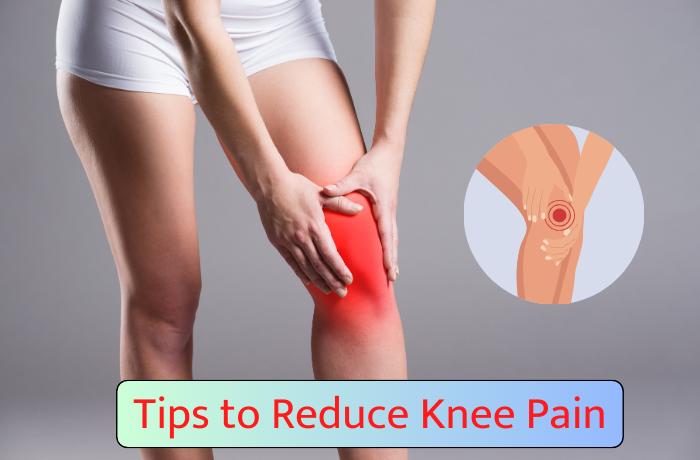Knee pain is a common problem that many people experience at some point in their lives. It can be caused by a variety of factors, including injury, arthritis, or even the wear and tear that comes with age. Whatever the cause, knee pain can interfere with daily activities, so it is important to find ways to alleviate it. In this blog, we will explore some effective tips to help reduce knee pain naturally and improve your quality of life.
1. Stay Active with Low-Impact Exercises
One of the best ways to manage knee pain is to keep moving. Engaging in regular exercise strengthens the muscles around your knee, providing better support. Low-impact activities such as walking, swimming, or cycling are excellent options. These exercises help you maintain fitness without putting too much pressure on your knees.
If you’re just starting, aim for 20-30 minutes of activity a few times a week and gradually increase the duration as your knees become stronger. Always listen to your body and stop if you feel any pain.
2. Maintain a Healthy Weight
Carrying extra weight can put extra stress on your knee joints, which can increase pain and discomfort. Maintaining a healthy weight can significantly reduce the strain on your knees. Eat a balanced diet rich in fruits, vegetables, whole grains, and lean proteins.
Combining healthy eating habits with regular exercise can lead to effective weight management. Even a small amount of weight loss can make a big difference in reducing knee pain.
3. Apply Heat or Cold Therapy
Heat or cold therapy can help relieve knee pain. Cold packs are useful for reducing swelling and numbing sharp pain, especially after activity. Apply a cold pack for about 15-20 minutes at a time, making sure to wrap it in a cloth to protect your skin.
On the other hand, heat can help relax and soothe stiff muscles and joints. A warm towel, heating pad or warm bath can be effective. Try alternating between heat and cold therapy to see what works best for you.
4. Consider physiotherapy
If knee pain persists, you may benefit from working with a physiotherapist. They can design a programme specifically for you, focusing on strengthening the muscles that support your knee and improving flexibility.
Physiotherapy can also help you learn proper movement techniques to reduce the risk of further injury. If you’re not sure where to find a physiotherapist, your doctor can make recommendations.
5. Practice Good Posture and Body Mechanics
Maintaining good posture is essential for the overall health of your body, including your knees. Poor posture or incorrect movements can put extra stress on your knees. Be aware of how you sit, stand and move throughout the day.
When lifting heavy objects, use your legs instead of your back and avoid twisting your knees. Taking breaks to stretch and adjust your posture can help prevent pain from building up.
8. Consider alternative treatments
In addition to traditional methods, many people find relief from knee pain through alternative treatments. Techniques such as acupuncture, massage therapy and the use of knee braces can be beneficial in managing pain and improving mobility.
Acupuncture involves inserting thin needles into specific points on the body, which can help reduce pain. Massage therapy can relax tight muscles around the knee and improve circulation. A knee brace can provide support and stability, especially during physical activity.
Knee pain can be a challenge, but there are several strategies you can try to reduce discomfort and improve your mobility. From staying active and maintaining a healthy weight to exploring alternative treatments, these tips can help you manage your knee pain more effectively.
If you continue to experience knee pain, consider seeking professional advice. Dr.Gokul Kale at Sushila Hospital offers knee pain treatment in Baramati. He can provide you with tailored advice and help you find relief.

